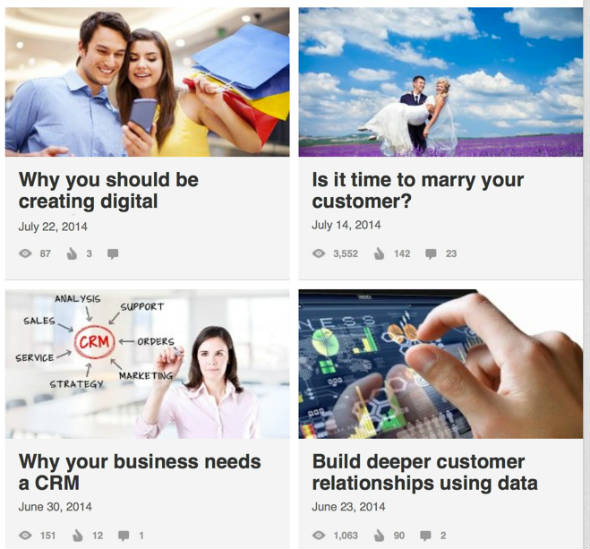There is no doubt about it – LinkedIn is a powerful platform and a great way to help build your professional reputation.
Apart from participating in Groups, LinkedIn’s now allows you to publish your content on LinkedIn.
But it can take a bit of courage to get out there and put your thoughts out in front of a large audience publicly.
Before you dive in you need to consider if LinkedIn Publishing is right for you and what are some of the gotchas to be aware of.
Should you use LinkedIn Publishing?
This is going to come down to your objectives. What do you want to achieve?
If your goals are either to become known as an industry thought leader or to attract potential employers, then maybe it is worth considering.
Remember, you are publishing on your personal profile so you really need to think about what brand YOU stands for.
The benefits of using LinkedIn publishing:
- Enables you to expand your audience and network – pretty nifty if you are looking to change jobs or attract new business
- Helps you get more credibility within your LinkedIn Community – people gravitate to leaders. Demonstrating leadership helps build authority.
- Increases referral traffic to your website or blog – moving people to your assets, gives you the opportunity to generate business leads if you have the rights systems in place.
- Access to analytics that gives you insights into what demographics is most engaged with your content and just as importantly, what content your audience finds the most engaging.
- Showcase your knowledge and insights to future employers
Things to look out for when using LinkedIn publishing
- Remember you are publishing on someone else’s platform – you don’t own it. If LinkedIn change the rules, then your content is at the mercy of LinkedIn. People did the same on Facebook and are now complaining because no one sees their posts.
- It helps if you already have a reasonable number of connections on LinkedIn. If you only have a few connections you may not get much traction.
What we recommend
We recommend not putting all your content on LinkedIn. Your main content hub should always be on your own website or blog. Publish content to your blog first and foremost. It is never wise to put all your eggs in one basket – ever!
Find your best content that matches your LinkedIn communities interest and publish that on LinkedIn. Ensure your articles are full and complete with great insights – no fluff and no plagiarism either. Be authentic. Use appealing images that match the content.
Make sure your posts are not self serving and overly promotional. You goal here is to build credibility and benefit the wider LinkedIn community. LinkedIn’s terms state pretty much the same thing:
“LinkedIn discourages and may disable posts that self-servingly advertise a service, business, political cause or other organization or cause that does not benefit the broader LinkedIn community”
Your content should be related to topics like business, leadership, careers, employment and management. You may even want to consider rewriting the content so it is unique.
Pay particular attention to rewriting the headings – you don’t want the content on your website to compete with LinkedIn in Google search (though Google is becoming increasingly better at sorting that).
We also recommend you re-purpose the content so the content is unique. In other words, don’t copy and paste the content from your blog. Re-write it.
Make the most of your bio section – include links to your own digital assets.
Don’t expect that people will find your content – you also need a strategy to promote your content. Share your content to your other digital assets – like Google+, Twitter and Facebook and consider sharing to key influencers who can help promote your content.
Once your content is published, make sure you monitor any comments and remember to evaluate the posts performance by using LinkedIn’s analytics.
And one more important thing!
Write appealing headlines. This doesn’t just apply to LinkedIn – it applies to all your content.
Compare the difference between these posts on LinkedIn. Notice the posts that got more attention and comments were the ones that arouse curiosity or demonstrate a benefit.

